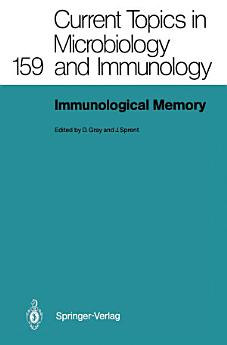Immunological Memory
David Gray · Jonathan Sprent
2013年3月 · Current Topics in Microbiology and Immunology 第 159 冊 · Springer Science & Business Media
電子書
141
頁數
report評分和評論未經驗證 瞭解詳情
關於這本電子書
Although immunologists know rather a lot about the manif estation of immunological memory, an understanding of the mechanism of memory at cellular and biochemical levels eludes us. Indeed, as we shall see, it is not even clear which of the several models used to explain the working of memory approximates to the truth. It is in order to report on approaches to this problem and on recent experimental advances in the field of memory cells that this volume has been put together. In the past 4-5 years cell surface molecules that may enable us to define memory Band T cells have been identified. It may now be possible to ask how memory cells are generated and to define what signals are required during or after antigenic encounter for a cell to enter the memory cell pool rather than to terminally differentiate into an effector cell. The transition from virgin cell to memory cell is clearly accompanied by several biochemical changes. For B cells, isotype switching and somatic mutations (leading to affinity maturation) are well-defined phenomena, although the molecular mechanisms remain mys terious. Both have received attention in many excellent reviews of late and so are not considered in detail in this book. Neither switching nor somatic mutation is a feature of peripheral T-cell maturation; biochemical differences between virgin and mem ory T cells may only relate to differing activation requirements and possibly changes in the expression of accessory molecules.
為這本電子書評分
請分享你的寶貴意見。
閱讀資訊
智能手機和平板電腦
手提電腦和電腦
你可以使用電腦的網絡瀏覽器聆聽在 Google Play 上購買的有聲書。
電子書閱讀器及其他裝置
如要在 Kobo 等電子墨水裝置上閱覽書籍,你需要下載檔案並傳輸到你的裝置。請按照說明中心的詳細指示,將檔案傳輸到支援的電子書閱讀器。











